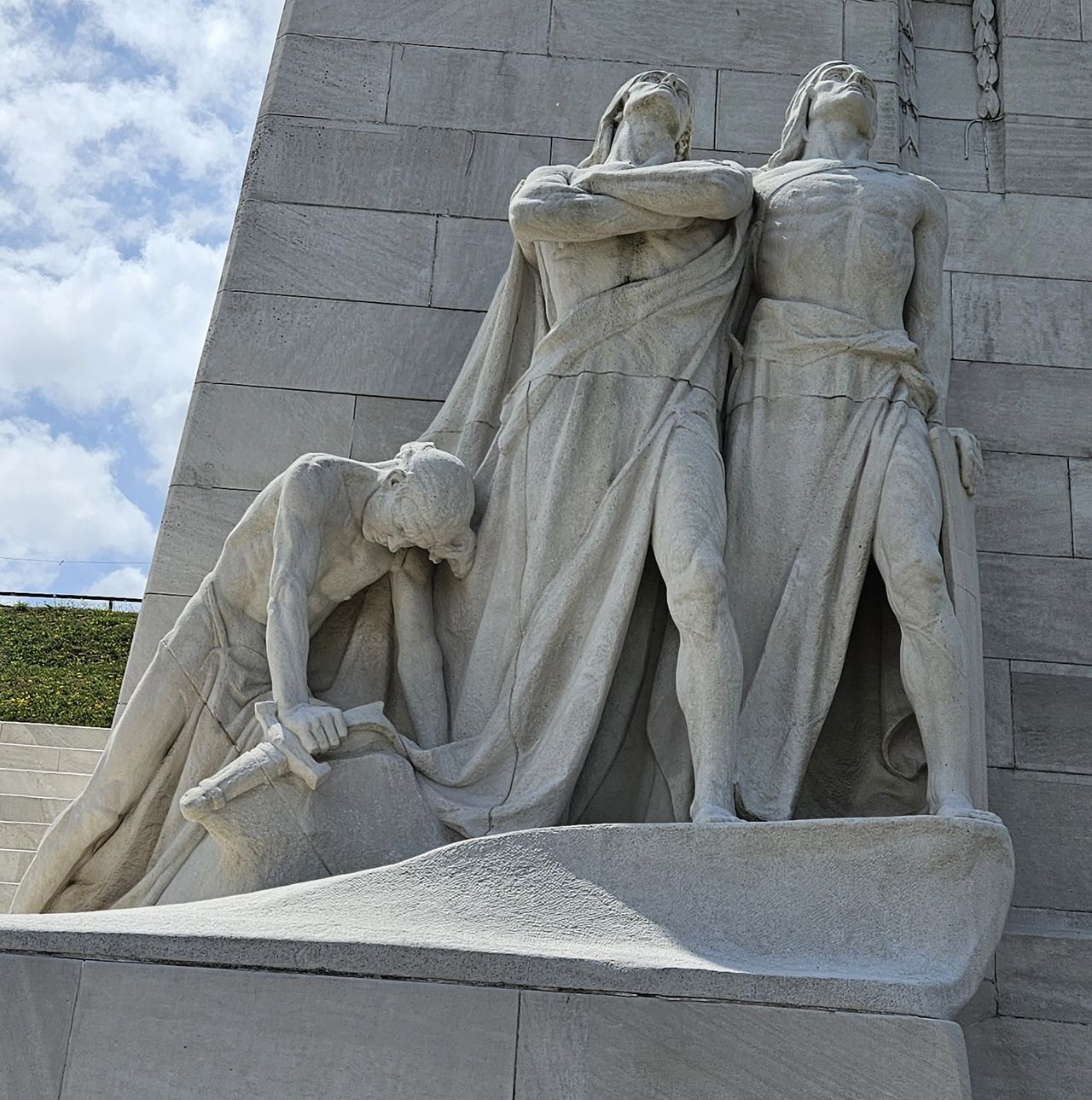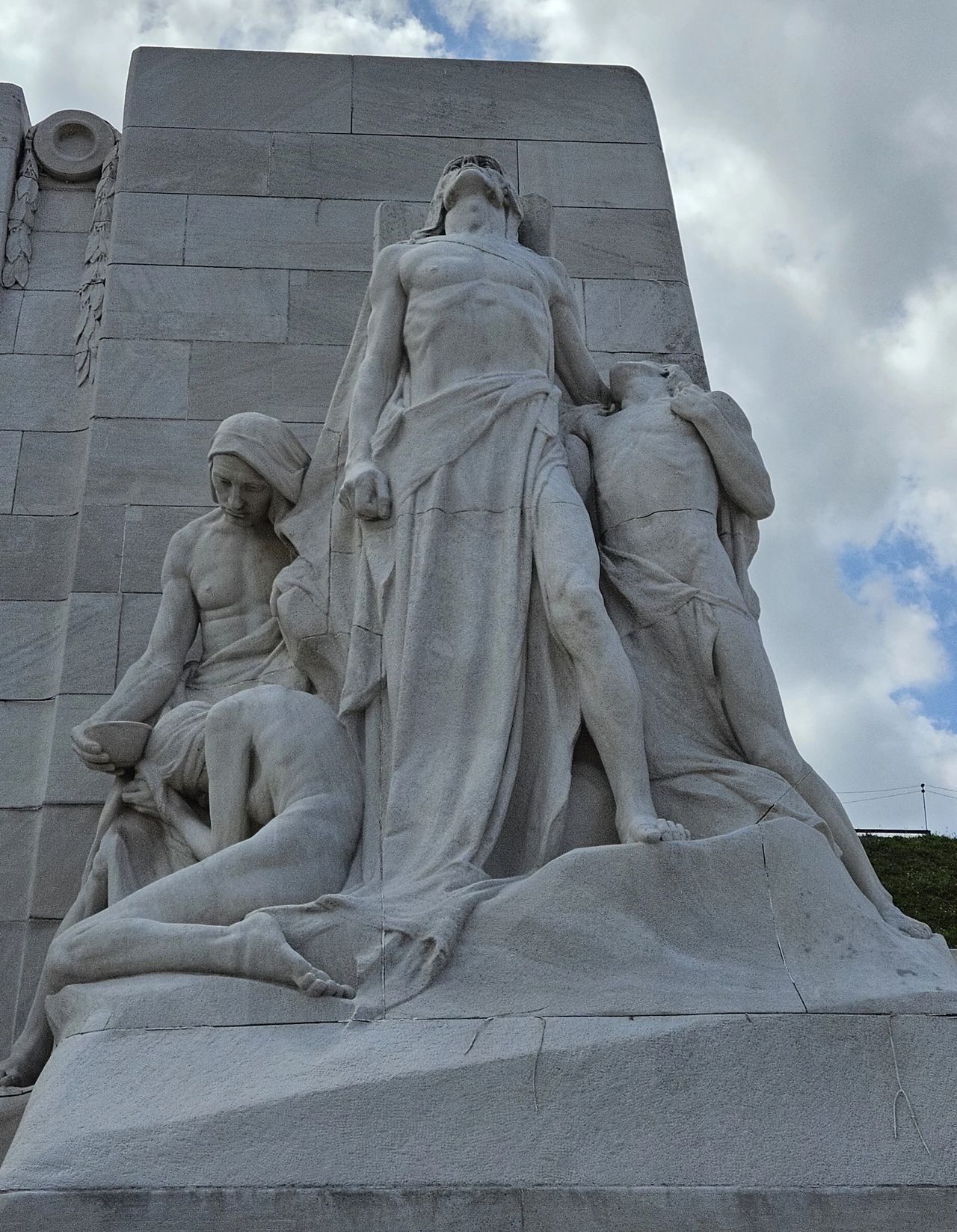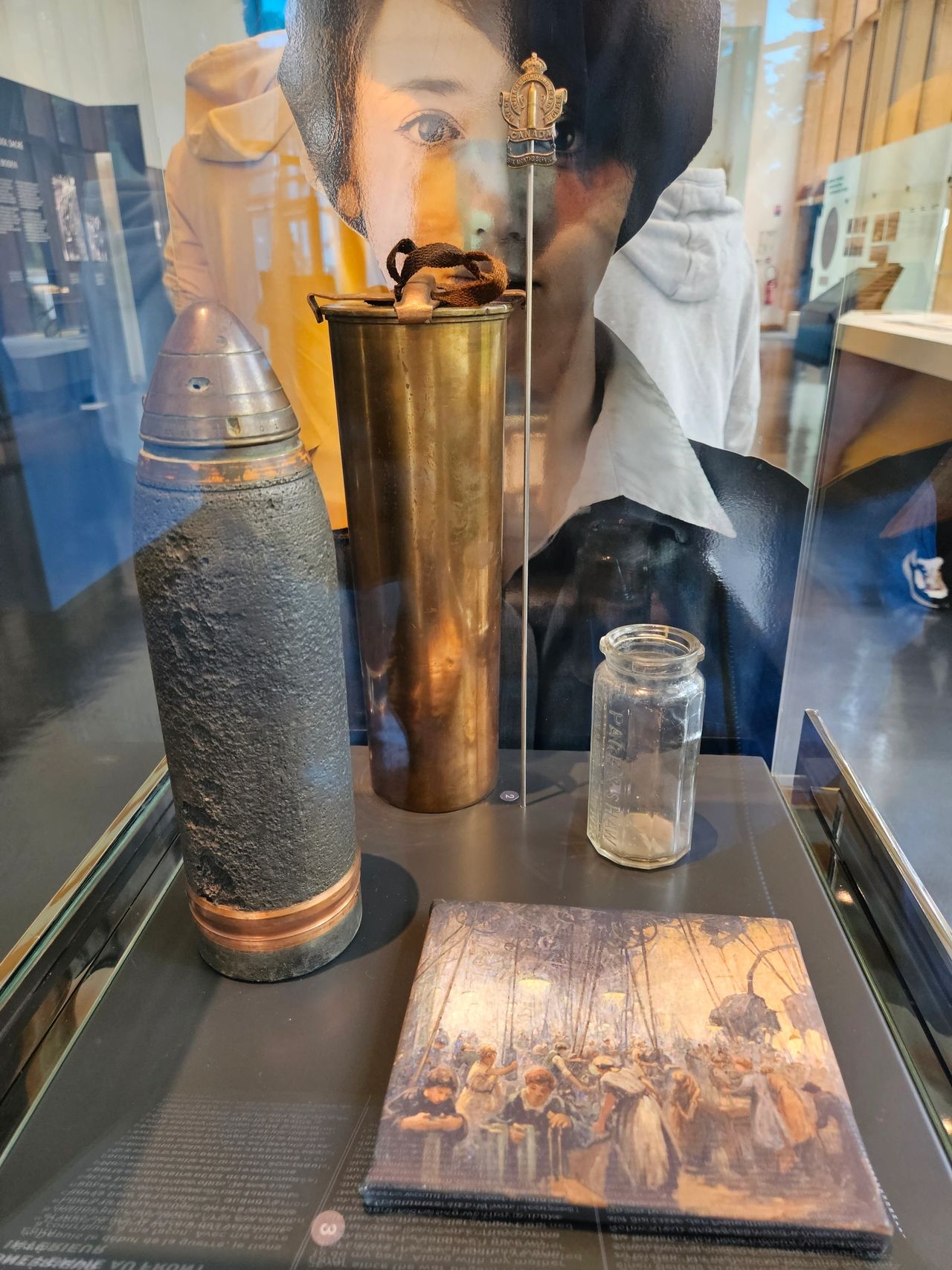WW1 Memorial to remember, to contemplate, and to be proud.
November 8, 2023 | Travel Stories

One of the most important of all Canadian military sites, the Vimy Ridge Memorial towers a full 110 meters over the Douai plain in northern France.
Vimy Ridge is a very special, symbolic, and somber place. Thousands of Canadians visit each year. We go to pay respect to our fallen soldiers. To remember their ultimate sacrifice. To remind us of the horrors of war.
As Remembrance Day approaches, I think back on my recent visit to Vimy Ridge. There are few memorials that mean as much to Canadians.
The lore of Vimy Ridge is well known. All four Canadians divisions fighting as one for the first time. Canadians distinguishing themselves for strength, bravery and meticulous preparation. Canadians were proudly fighting together as Canadians, a country barely fifty years old.
I stand at the base of the monument and feel incredibly proud to be Canadian. The ideals that shaped our nation were once, and will forever remain, on display here. Bravery. Respect. Honour. Duty. Strength. Freedom. Democracy. Love.
I stand at Vimy Ridge, and think about our soldiers. I thank our soldiers for their sacrifice. I honour them by learning about them. About the people they were. How they died.
While I stand at Vimy Ridge, I feel as if I can talk to them all. Thank them all. The names of 11,285 Canadian soldiers killed or missing in France during WW1 are carved into the white marble around the base of the monument. I count at least seven ‘Palmer’s. How many letters went to the same mom?
I have visited the war memorial in Ottawa and toured the Canadian war museum. I encourage every Canadian, and anyone else, to visit those sites in our nation’s capital. But it is not the same. No blood was spilt on that soil. The dead don’t talk to you.

At Vimy, the dead do talk. From row upon row of light-shaded headstones, they speak. You close your eyes and imagine the fighting. The guns, the screams of the wounded, the organized chaos in the mud, cold sleet raining down through the fog. They speak as you imagine countless acts of heroism, bullets streaming past from enemies unseen. The dead talk here.
There are two cemeteries. I walked down the open center of each. Many of the graves are without names, stating simply ‘A Soldier of the Great War.’ The dated stones usually indicated a young man under 25. Some were still teenagers.



As I walk the grounds, I reflect. I was never called on to serve, and I never felt the calling to serve. I am more grateful now than in my younger days. To those that gave so much, so that I, and almost all of my peers, might enjoy a life with the choice, the freedom to never fight in a war. In our hurried lives, it is easily forgotten that such freedom came at a cost.
More than just a monument, Vimy Ridge is an excellent museum. The Vimy Ridge Visitor Education Center is open year round and has many detailed displays. You learn about the lives of the soldiers, in their own words. Canadian students conduct tours of the grounds, tunnels and trenches.
The trenches and tunnels were preserved while workers and sculptors were awaiting marble shipments, to continue being paid during the depression. They were not in the original plans, but add greatly to the site.
You listen to real accounts of the men in the field. You see the first masks used against the German poisonous mustard gas. You read letters sent home. You feel their words and sense their terror and the loneliness of missing their loved ones.
Read “In Flanders Fields”

Vimy Ridge is one of the most powerful places I have ever visited. A wide range of emotions were felt as I toured the grounds. Sadness and loss. Perseverance and hope. Love and pride for my country.
A Canadian flag flies over an area dedicated to the planting of one hundred oak trees. The oak trees were from acorns picked up by a soldier at Vimy, who had taken them home and planted them on his farm. May the Vimy Ridge monument stand for several more generations of oak trees. May Canadians continue to visit, to understand, and to mourn the fallen.
November eleventh is fast approaching. Armistice day. All guns were to be silent from 11:11 onward.
Yet, as I type this, people are dying in another war. There is always another war. The innocent will suffer the most. One day humankind will evolve past our predatory beginnings and realize the potential of a world united by peace and opportunity for all. I have faith in humanity.
Interestingly, Hitler toured the site in 1940, and ordered it not to be destroyed. For reasons unknown.
I have also written about my visit to Dachau Concentration Camp. Some similar, but different emotions. https://medium.com/globetrotters/my-visit-to-dachau-eceb163c7fce
More Photos:













